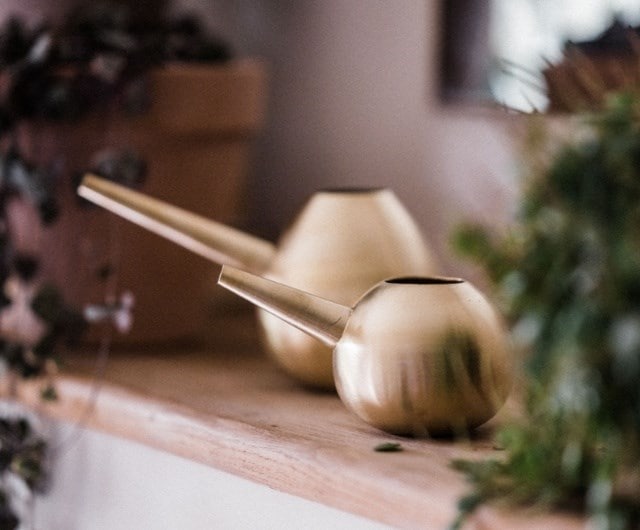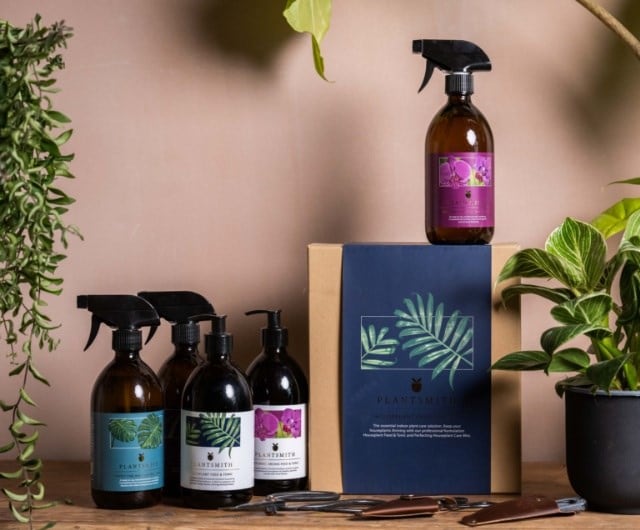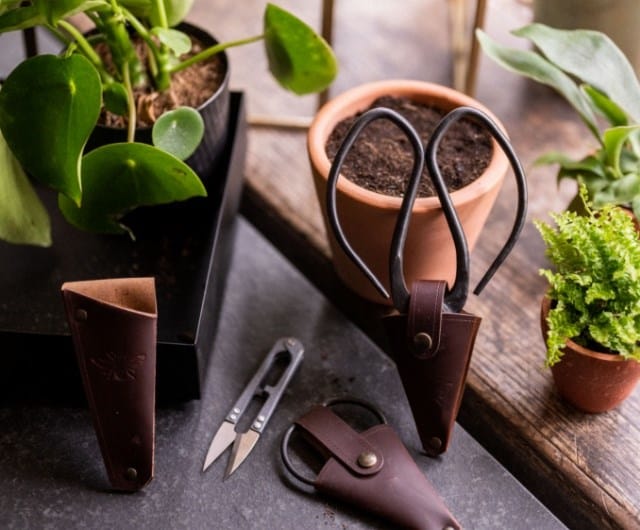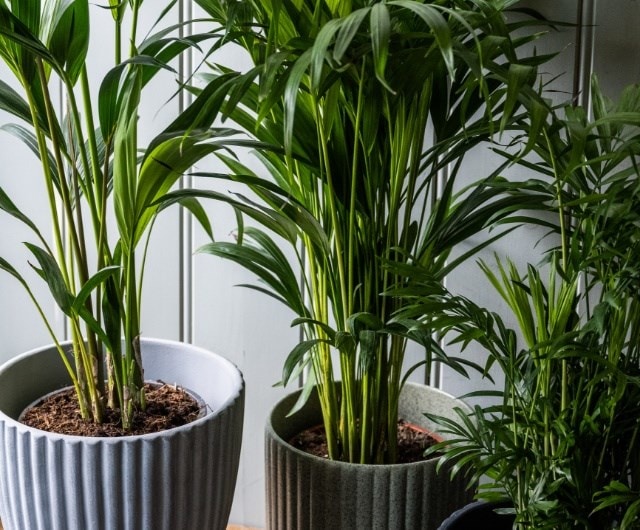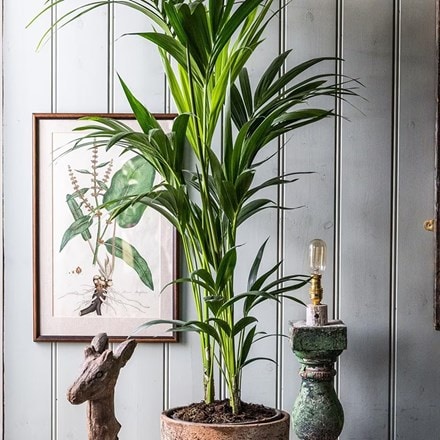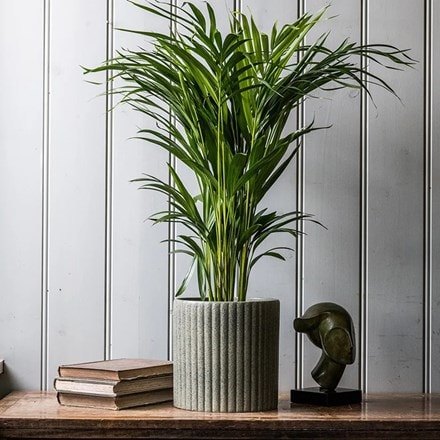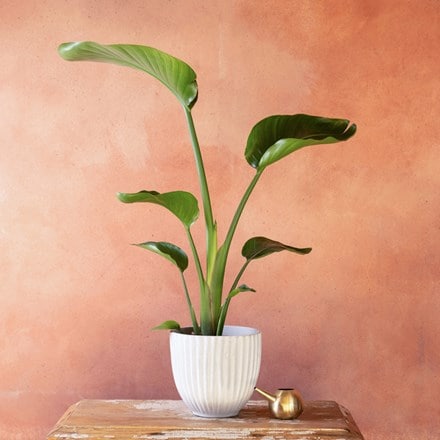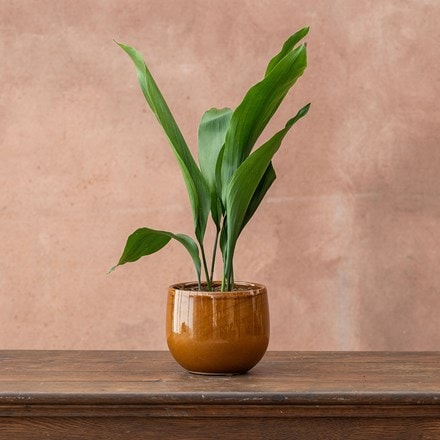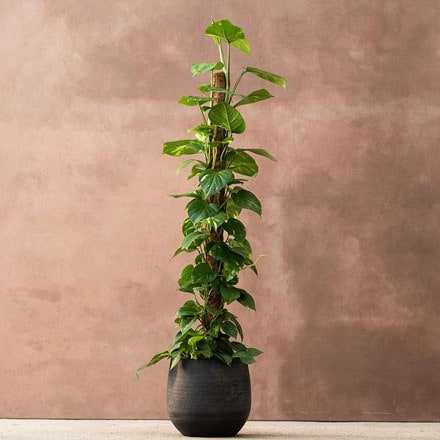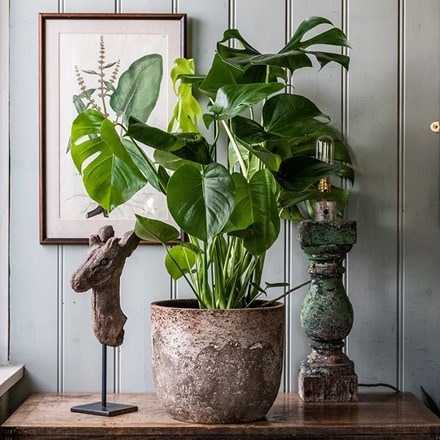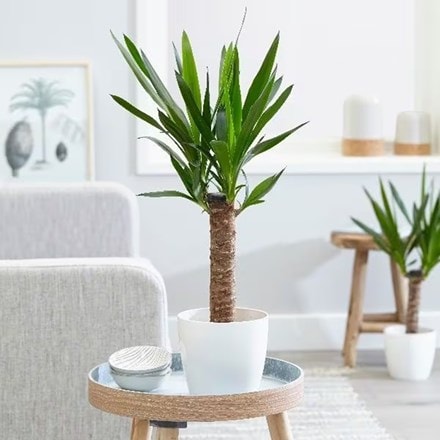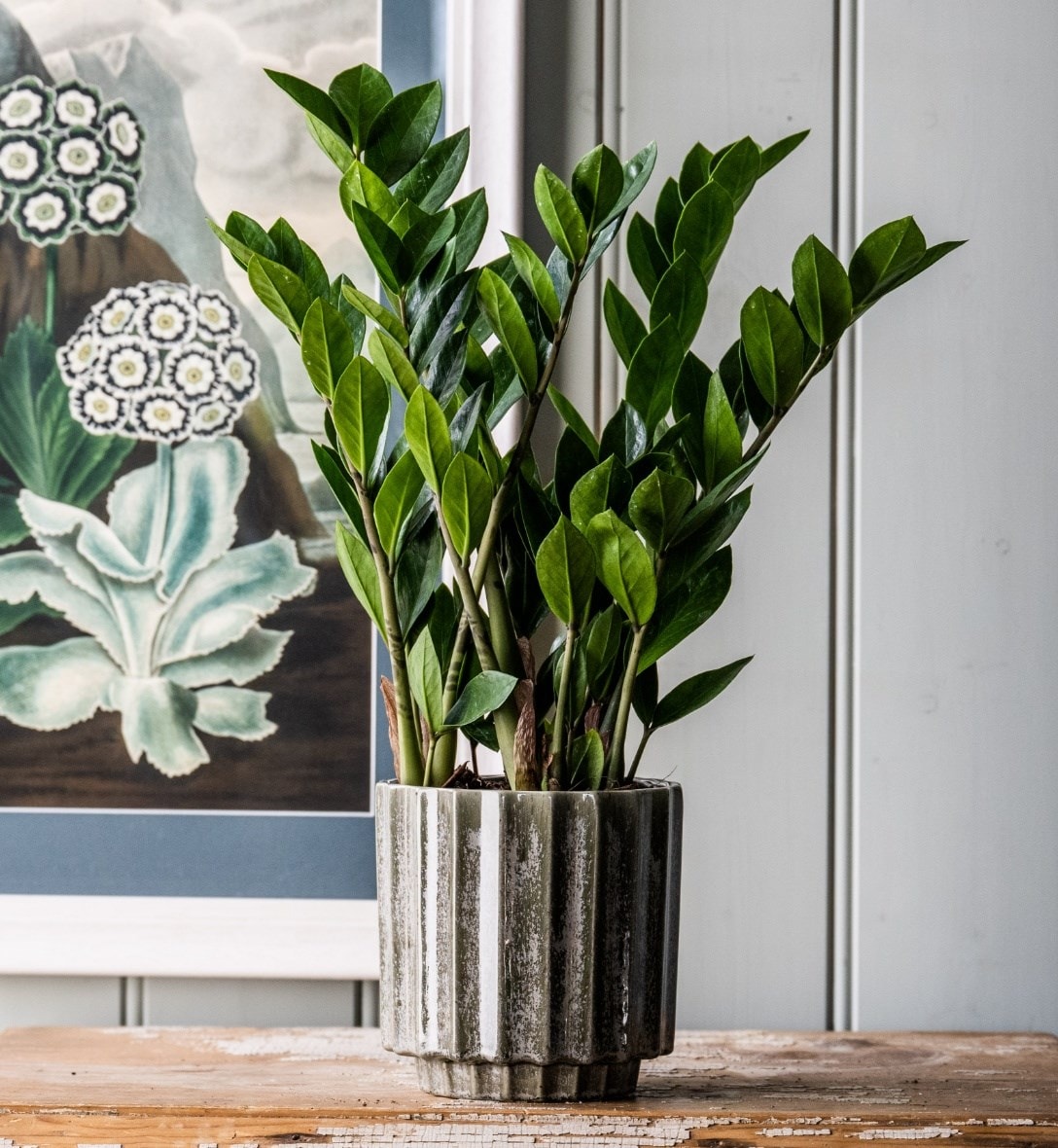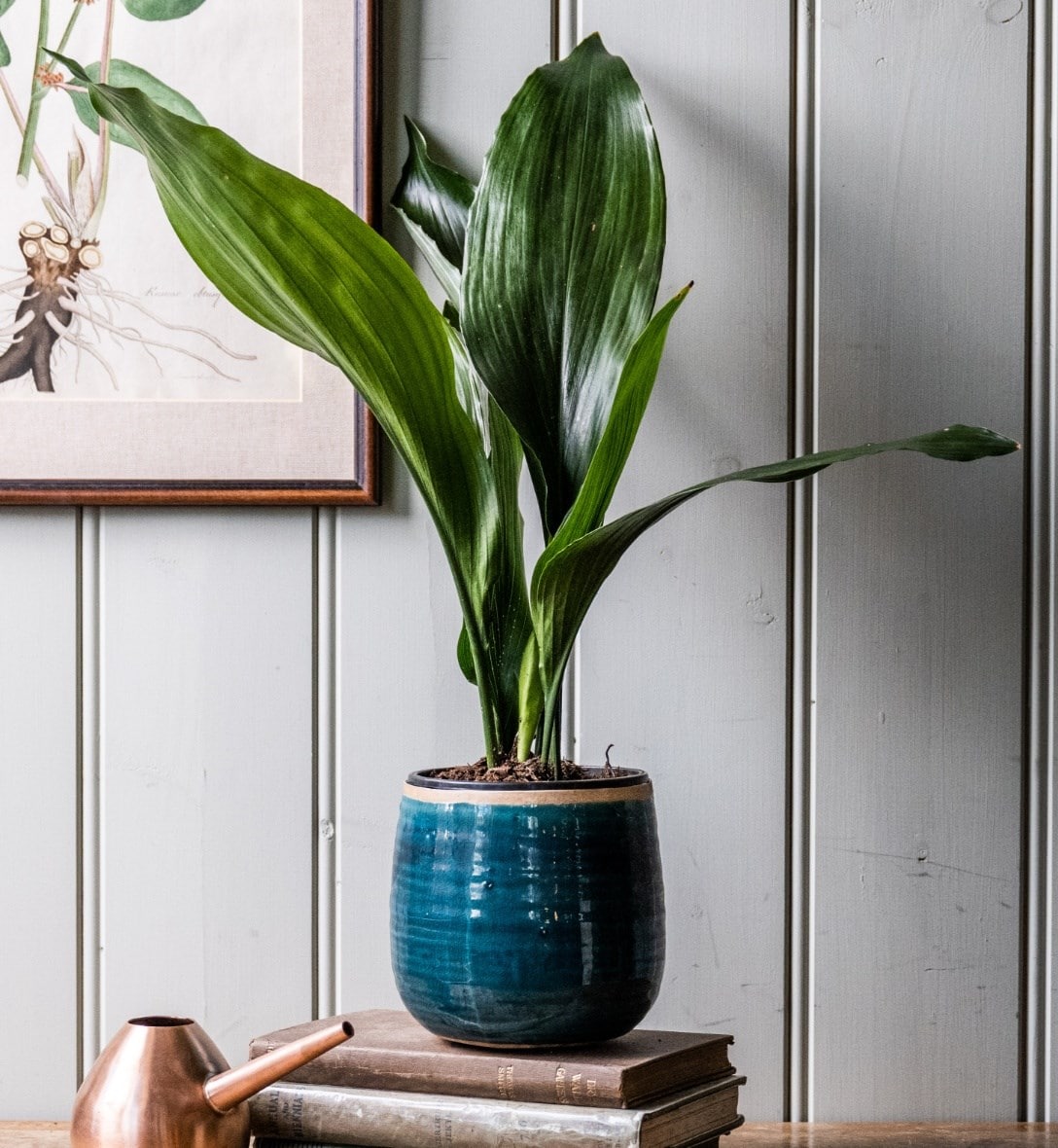How to care for indoor palms
Are you a palm lover who needs some quick care tips? Keep reading to find out the types of palms and the best way to care for them.
Indoor palms are great for creating indoor jungles with large leaves, towering statures and vibrant hues. Plus, as part of our foliage indoor plant range, they naturally clean the air around your home while making a statement.
If you're worried about maintaining a palm, some require little care, making them a perfect option for new plant parents. So how do you ensure your jungle thrives?
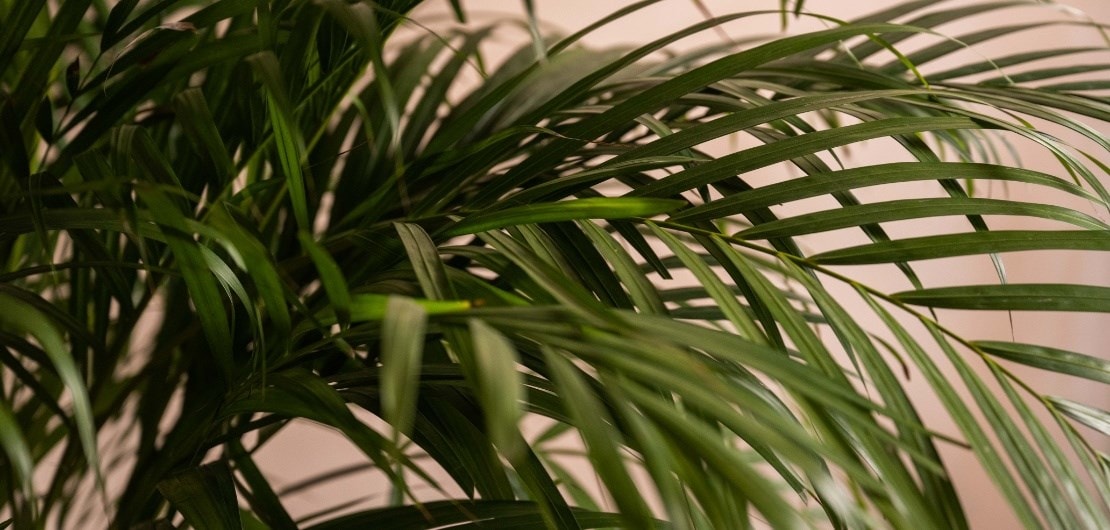
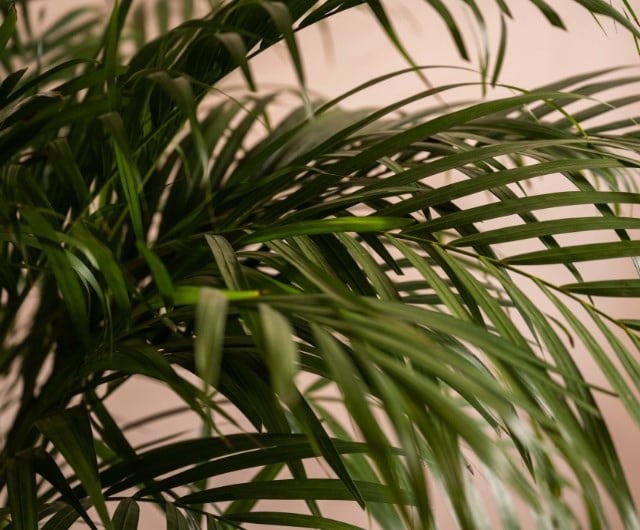
Are indoor palms easy to grow?
Nurturing your indoor palms is a rewarding experience. In this step-by-step guide, we'll explain the tricks to use to help care for tropical plants. From selecting the perfect spot for your leafy friends to understanding their specific needs for light, water, and nutrients.
Choose the right spot and select the right palms for your space
Parlour palm (Chamaedorea elegans) and Kentia palm (howea forsteriana) are the easiest palms to grow. They are not fussy about their conditions and tolerate fairly low light levels, making them perfect winter houseplants.
Parlour palms are great for smaller areas, while kentia and bamboo palms make a statement in larger rooms. For more information and help on where to house your indoor plant, see our article - Which house plant where?
1. Light
Palms prefer bright, indirect light in summer. In winter, put plants near windows for light, but not in direct sunlight, to avoid scorching the leaves with glass. Kentia palms, in particular, will tolerate low light levels away from windows.
2. Watering
When the soil feels dry in winter, water sparingly and remember that palms do not like to sit in soggy conditions. In summer, water more frequently, keeping the compost moist throughout the season. Remember, each palm has slightly different water needs, so head to their page to learn more about your specific one.
3. Feeding
In spring and summer, give your palms plant food to help them grow. You can use a balanced liquid or a slow-release fertiliser. This provides the essential nutrients for robust growth.
4. Humidity
Indoor palms appreciate a bit of humidity. If your home is dry, you can mist or put plants in wet gravel to imitate their natural environment. Keep the water level just below the gravel level so that the plant does not sit in wet conditions.
Why not try Hydroleca pebbles? Ceramic clay pebbles form them, with a smooth outer skin and honeycomb centre. The pebbles absorb water and slowly release it, helping to keep plants humid. They will also boost humidity around indoor plants to counteract the drying effects of central heating.
5. Perfect Pruning
Trim brown or yellow fronds with clean, sharp secateurs or scissors. Never pull dead or dying fronds off, as this can damage the plant. Pruning keeps your plant looking fresh but also encourages new leaves to grow.
6. Repotting
Repot your palms every 2-3 years or when they outgrow their container. Early spring is the best time to repot.
Choose a slightly larger pot with well-draining growing media. Ideally, John Innes No2 or a peat-free compost formulated for indoor plants. For extra drainage, add some coarse sand when repotting.
7. Top-dressing
Each year, take out the top 5 cm of soil from the pot and replace it with new soil. If it's a repotting year you can leave this.
Make sure to refer to the care instructions provided on the product pages of each indoor foliage plant. These guidelines will tell you how much water, care for leaves, and preferred conditions for plants.
Which foliage plant where?
When it comes to choosing a new plant for your home, there are some great options for every style and space. For easy-to-care-for, try a snake plant (sansevieria). These resilient houseplants require minimal attention while purifying the year.
For something a little more complex, try a prayer plant (Maranta leuconeura). Although they need extra attention, you'll love how their leafy appearance opens and closes, giving a tropical vibe.
For large green leaves, palms will create the allure of a tropical paradise. Eventually, some of these behemoths will reach nearly 10 feet tall, filling your room with vitality.



